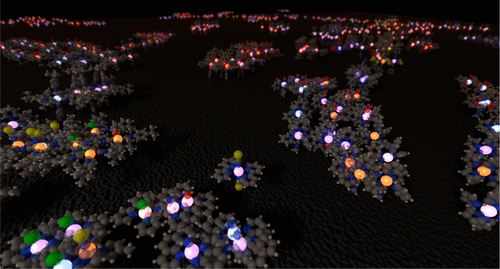当前位置:
X-MOL 学术
›
Acc. Chem. Res.
›
论文详情
Our official English website, www.x-mol.net, welcomes your feedback! (Note: you will need to create a separate account there.)
Navigating Transition-Metal Chemical Space: Artificial Intelligence for First-Principles Design
Accounts of Chemical Research ( IF 18.3 ) Pub Date : 2021-01-22 , DOI: 10.1021/acs.accounts.0c00686 Jon Paul Janet 1 , Chenru Duan 1, 2 , Aditya Nandy 1, 2 , Fang Liu 1 , Heather J. Kulik 1
Accounts of Chemical Research ( IF 18.3 ) Pub Date : 2021-01-22 , DOI: 10.1021/acs.accounts.0c00686 Jon Paul Janet 1 , Chenru Duan 1, 2 , Aditya Nandy 1, 2 , Fang Liu 1 , Heather J. Kulik 1
Affiliation

|
The variability of chemical bonding in open-shell transition-metal complexes not only motivates their study as functional materials and catalysts but also challenges conventional computational modeling tools. Here, tailoring ligand chemistry can alter preferred spin or oxidation states as well as electronic structure properties and reactivity, creating vast regions of chemical space to explore when designing new materials atom by atom. Although first-principles density functional theory (DFT) remains the workhorse of computational chemistry in mechanism deduction and property prediction, it is of limited use here. DFT is both far too computationally costly for widespread exploration of transition-metal chemical space and also prone to inaccuracies that limit its predictive performance for localized d electrons in transition-metal complexes. These challenges starkly contrast with the well-trodden regions of small-organic-molecule chemical space, where the analytical forms of molecular mechanics force fields and semiempirical theories have for decades accelerated the discovery of new molecules, accurate DFT functional performance has been demonstrated, and gold-standard methods from correlated wavefunction theory can predict experimental results to chemical accuracy.
中文翻译:

导航过渡金属化学空间:人工智能的第一性原理设计
开壳过渡金属络合物中化学键的可变性不仅激发了其作为功能材料和催化剂的研究动力,而且还挑战了传统的计算建模工具。在这里,定制配体化学性质可以改变首选的自旋或氧化态以及电子结构性质和反应性,从而创建了广阔的化学空间区域,以便在逐个原子地设计新材料时进行探索。尽管第一原理密度泛函理论(DFT)仍然是计算化学在机理推论和性质预测中的主力军,但在此用途有限。对于广泛研究过渡金属化学空间而言,DFT的计算成本太高,而且还容易出现误差,从而限制了其对过渡金属络合物中局部d电子的预测性能。
更新日期:2021-02-02
中文翻译:

导航过渡金属化学空间:人工智能的第一性原理设计
开壳过渡金属络合物中化学键的可变性不仅激发了其作为功能材料和催化剂的研究动力,而且还挑战了传统的计算建模工具。在这里,定制配体化学性质可以改变首选的自旋或氧化态以及电子结构性质和反应性,从而创建了广阔的化学空间区域,以便在逐个原子地设计新材料时进行探索。尽管第一原理密度泛函理论(DFT)仍然是计算化学在机理推论和性质预测中的主力军,但在此用途有限。对于广泛研究过渡金属化学空间而言,DFT的计算成本太高,而且还容易出现误差,从而限制了其对过渡金属络合物中局部d电子的预测性能。



























 京公网安备 11010802027423号
京公网安备 11010802027423号